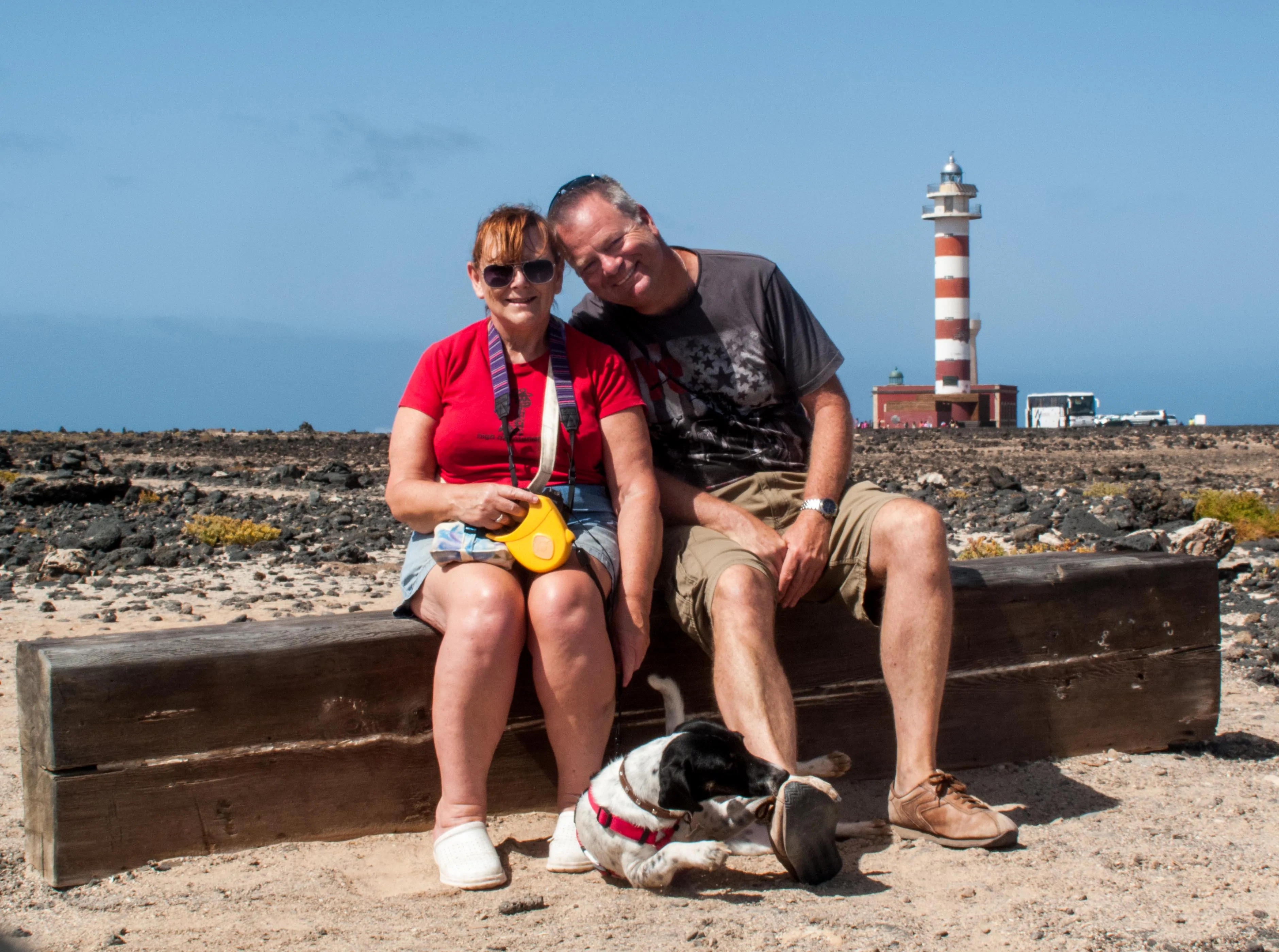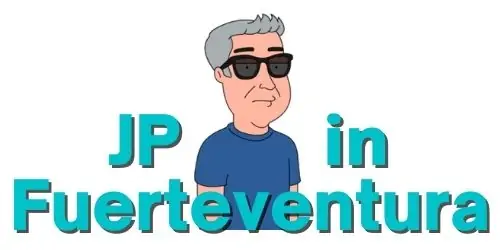Pozo Negro is a small village on Fuerteventura’s east coast, just south of Caleta de Fuste. This tiny fishing village offers a peaceful escape from the island’s busier tourist spots.
With its black sand beach, volcanic landscape and rich history, Pozo Negro is perfect for travellers seeking an authentic Canarian experience.
You’ll find a quiet beach with dark sand and pebbles, surrounded by dramatic badlands formed by ancient lava flows.

The natural harbour has been used since at least the 15th century, when it appeared on early maps of the area. Today, small fishing boats can still be seen bobbing in the crystal-clear waters.
Near the village, you can explore the remains of an aboriginal settlement with over 100 buildings. This archaeological site offers a glimpse into the island’s past. After a day of sightseeing, relax at one of the local restaurants and sample fresh seafood caught by village fishermen. Pozo Negro’s unspoilt charm and stunning scenery make it a must-visit destination on your Fuerteventura trip.
Discovering Pozo Negro, Fuerteventura

Pozo Negro is a hidden gem on Fuerteventura’s east coast. This tiny fishing village offers a unique blend of natural beauty and historical significance that will capture your imagination.
History and Significance
Pozo Negro’s roots run deep. The harbour was first mentioned in 1426 in Giacomo Giroldi’s Atlas. This long history makes it an important spot for understanding Fuerteventura’s past.
The village sits in a wide valley formed by ancient lava flows from the calderas of Liria and Laguna thousands of years ago.
Near Pozo Negro, you’ll find an exciting archaeological site. It holds clues about the island’s early inhabitants and the Spanish Conquista period.
The village’s name, which means ‘Black Well’, hints at its vital role. It likely provided water for early settlers in this dry area.
The Unique Landscape of Malpais Grande
Pozo Negro is part of the Malpais Grande Protected Landscape. This area will amaze you with its stark beauty.
Dry mountains and lava fields surround the village. It’s one of the driest spots on Fuerteventura, which is already quite arid.
You’ll see dark sand and pebbles on the beach. These contrast beautifully with the bright blue sea.
Look for the ‘badlands’ near Pozo Negro. These are areas where erosion has carved interesting shapes in the soft rock.
Despite the dryness, you might spot some palm trees in the valley. These are signs that water is present, even in this harsh landscape.
Attractions & Activities around Pozo Negro

Pozo Negro offers a mix of historical sites, beautiful beaches, and tasty local cuisine. You’ll find plenty to see and do in this charming Fuerteventura village.
Poblado de la Atalayita: A Window to the Past
Near Pozo Negro, you can explore Poblado de la Atalayita, an ancient settlement. This archaeological site gives you a glimpse into the island’s past. You’ll see the remains of stone houses built by the native Majorero people.
The village dates back over 700 years. Walking among the ruins, you can imagine how the early inhabitants lived. Look out for the small museum on-site. It displays artefacts found during excavations.
The site sits on a hill, offering lovely views of the surrounding landscape. Don’t forget your camera!
Beaches and Bays: Fuerteventura’s Coastal Charm
Pozo Negro’s beach has dark sand and pebbles which make it stand out from other beaches on the island. The calm waters are perfect for a relaxing swim.
For a change of scenery, head to nearby Las Playitas. This small resort town has a long, sandy beach. It’s great for sunbathing or trying water sports.
If you fancy a bit of adventure, rent a kayak or paddleboard. You can explore the rugged coastline and hidden coves at your own pace.
Stargazing
Because of the absence of light pollution, Pozo Negro is a great place to see the stars at night.
You can take a trip there and be shown the heavens by experts through an astronomical telescope. Pick-up is available from Caleta de Fuste.
Practical Information for Visiting Pozo Negro

Pozo Negro is a charming fishing village worth exploring. Here’s what you need to know to plan your visit, from getting there to where to stay and how to get around.
Getting to Pozo Negro Via FV-420
The FV-420 road is your path to Pozo Negro. This scenic route winds through a valley surrounded by arid mountains and lava fields. As you drive, you’ll notice the landscape becoming more barren – it’s one of the driest areas on Fuerteventura.
The journey from Caleta de Fuste takes about 20 minutes by car. Look for the occasional palm tree, a sign that water is present in this otherwise parched terrain.
Remember to drive carefully, as the road can be winding in places. The stark beauty of the badlands created by ancient volcanic activity makes a memorable trip.
Accommodation Options: Staying in the Fishing Village
Pozo Negro offers a quieter, more authentic experience compared to larger resorts. Accommodation here is limited but charming.
You will find a few small guesthouses and holiday rentals in the village. These often provide a more personal touch and a chance to experience local life.
Consider staying in nearby towns like Caleta de Fuste for a wider range of options. From there, you can easily make day trips to Pozo Negro.
Booking in advance is wise, especially during peak seasons. The village’s small size means accommodation can fill up quickly.
Car Hire: Exploring with DiscoverCars
Renting a car is the best way to reach Pozo Negro and explore the surrounding area. DiscoverCars offers a range of vehicles suitable for navigating Fuerteventura’s roads.
With your own wheels, you can easily visit the black sand beach, take in the unusual landscape, and venture to nearby attractions at your own pace.
Choose a car that suits your needs – a smaller model is fine for couples, while families might prefer something roomier. Air conditioning is a must in Fuerteventura’s warm climate.
Book your car in advance to ensure availability and the best rates. Remember to check your rental agreement for any restrictions on driving on unpaved roads.
Exploring the East Coast of Fuerteventura

The east coast of Fuerteventura offers stunning landscapes and charming villages. Scenic valleys and traditional white houses showcase the island’s rural beauty and architectural heritage.
Valle de Santa Inés: Scenic Beauty and Rural Appeal
Driving along the east coast, you will see the picturesque Valle de Santa Inés. This lush valley stands out against Fuerteventura’s arid landscape. Palm trees dot the area, hinting at hidden water sources.
The valley offers a peaceful retreat from bustling tourist spots. You can take leisurely walks and enjoy the natural surroundings. Look for local wildlife and unique plant species that thrive in this microclimate.
Farmers still cultivate small plots in the valley, maintaining age-old traditions. You might spot goats grazing on the hillsides, adding to the rural charm.
Sightseeing: The Traditional Architecture of White Houses
The East Coast is home to charming villages filled with traditional white houses. These buildings are a hallmark of Canarian architecture.
As you explore, you will notice the stark contrast between the bright white walls and the blue sky. The houses often feature wooden balconies and green shutters, adding splashes of colour.
Many of these homes have thick walls to cool interiors during hot summers. The narrow streets are perfect for strolling and soaking in the local atmosphere.
Some villages offer guided tours, during which you can learn about the history and construction methods of these iconic buildings. Don’t forget your camera—these picturesque scenes are truly Instagram-worthy!
Navigating the Local Culture

Pozo Negro’s rich history and maritime traditions shape its unique cultural identity. The village’s past and present are deeply intertwined with the sea, creating a distinct local way of life.
Understanding the Influence of the Conquest
The Conquista left a lasting mark on Pozo Negro’s culture. Spanish colonisation in the 15th century brought the area new customs, languages, and religions. You’ll notice this influence in the local architecture, with whitewashed buildings and small chapels dotting the landscape.
The Spanish legacy is also evident in the cuisine, which blends traditional Canarian ingredients with Mediterranean flavours.
Despite these changes, Pozo Negro has kept some of its pre-colonial roots. You might spot traces of ancient Guanche culture in local place names and farming techniques. The villagers take pride in their mixed heritage, often celebrating Spanish and indigenous traditions during festivals.
Pozo Negro as a Puerto Natural: Embracing Maritime Heritage
Pozo Negro’s identity as a Puerto Natural (natural harbour) is central to its culture. The village’s sheltered bay has been a vital fishing spot for centuries. As you stroll along the shore, you’ll see small fishing boats bobbing in the water. These belong to local fishermen who still use traditional methods to catch their daily haul.
The sea’s influence extends beyond fishing. Many local dishes feature fresh seafood, and tasty options are available in the village’s small eateries. Maritime traditions also shape social life. Fishermen often gather to share stories and repair nets, creating a strong sense of community.
You can join in local festivities that honour the sea, like the Fiesta del Carmen. This celebration includes fishing boats being decorated and paraded along the coast. It’s a great chance to experience Pozo Negro’s vibrant maritime culture firsthand.

I have been holidaying in Fuerteventura for over 30 years and have been living here full time since 2013. I have a popular Youtube channel related to this website called JP in Fuerteventura




Leave a Reply